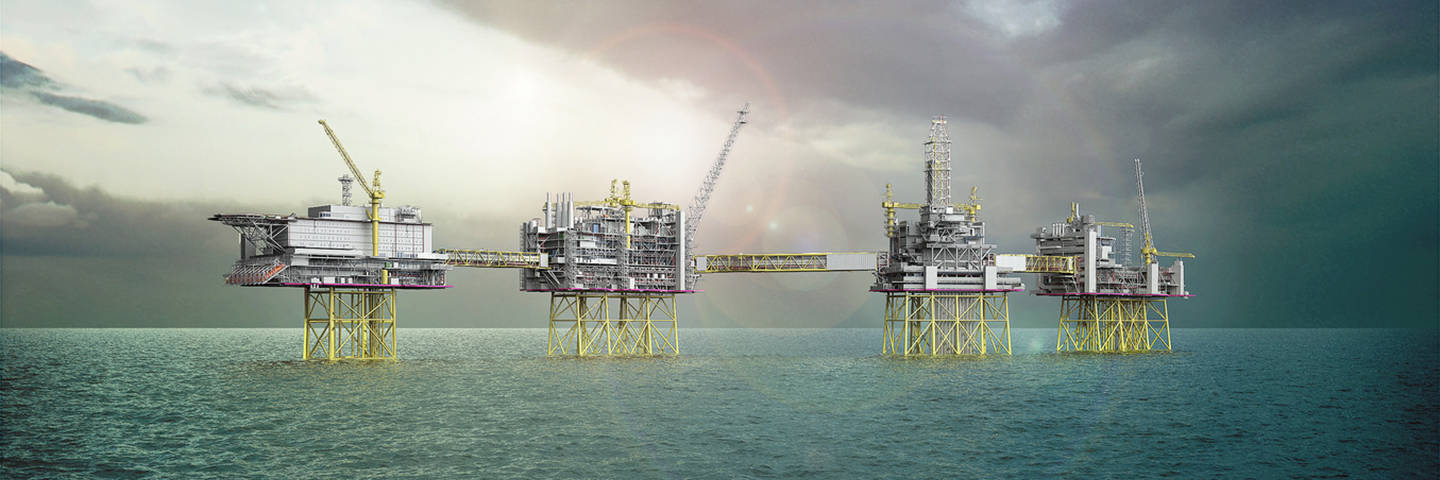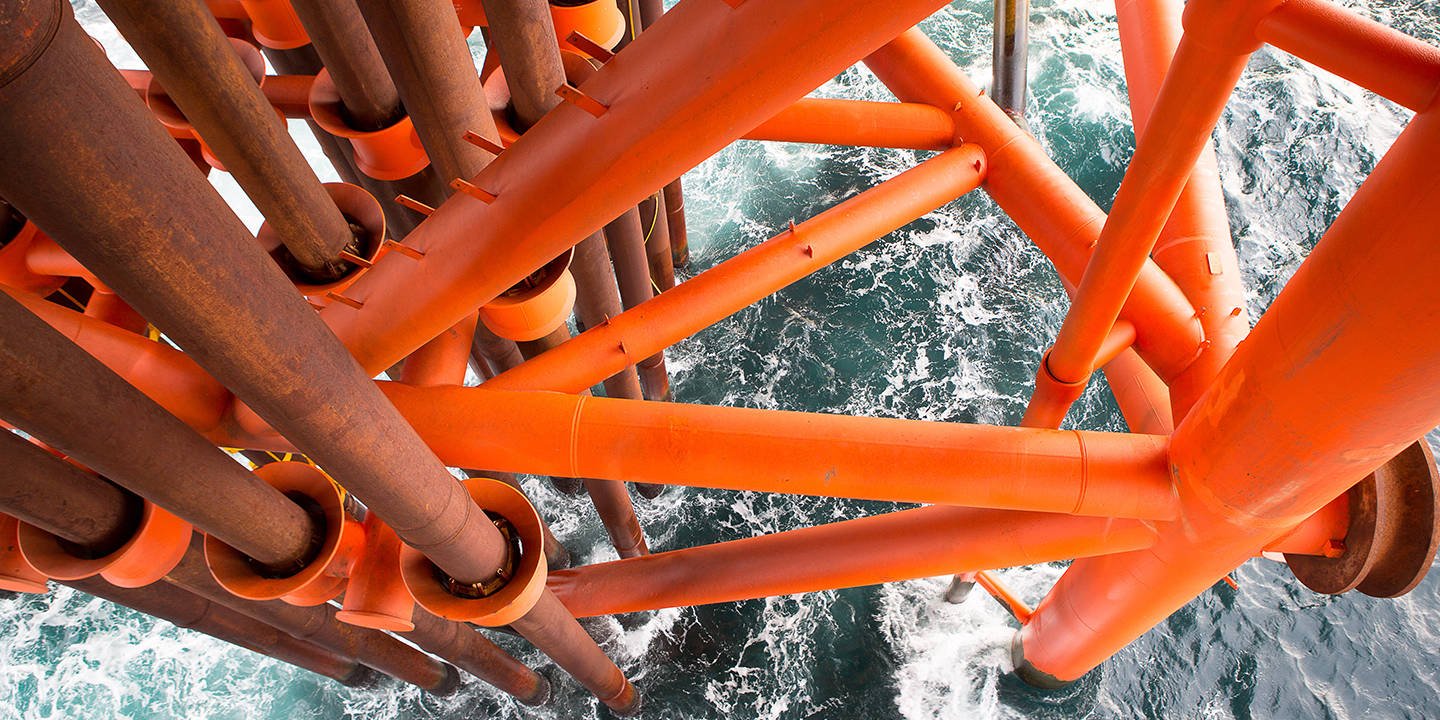Major investments have been made in exploration, field development, transport infrastructure and onshore facilities since petroleum activities started on the Norwegian continental shelf. Fields that are on stream also continue to require a substantial level of investment. Much of the Norwegian shelf is now served by an extensive network of installations and pipelines tied into onshore facilities. New discoveries can be tied back to this infrastructure. This will encourage a high level of activity and effective exploitation of resources on the shelf in the years ahead.
The oil companies and the supply industry have worked hard to improve profitability by operating more efficiently and reducing costs. This makes new projects profitable even if oil prices are low.
The cost estimates below are based on assumptions about oil price developments, cost trends and investment decisions by oil companies. The estimated figures are therefore considerably uncertain, and the uncertainty increases over time.

The high level of investments and exploration activity, combined with rising operating costs, resulted in record overall costs on the Norwegian continental shelf in 2014. Developments after 2014 have led to a considerable reduction in total costs, but the activity level today is historically high.
The figure below shows historical figures and estimates for the Norwegian shelf for investments, costs for field operation, exploration, decommissioning and disposal, as well as other costs. In 2024, the overall costs were close to NOK 370 billion. Investments made up about 60 per cent of this, operating costs 25 per cent, and exploration costs about nine per cent. Total costs are expected to increase in real terms by four per cent in 2025, before investment activity begins to decline in 2026 as several development projects near completion. The increase in total costs towards 2025 is largely related to increased investments due to investment decisions taken for several projects in the autumn of 2022.
Overall costs by category
Updated: 16.05.2025
Historical figures for 2012-2023 and forecast for 2024-2029
Source: Norwegian Offshore Directorate
Print illustration Download data Overall costs by category Download PDF Download as image (PNG)
High Contrast Mode
Exploration costs include costs related to seismic data acquisition to map potential petroleum deposits under the seabed and related to drilling exploration wells. Exploration wells are divided into two types, wildcat wells and appraisal wells. Wildcat wells are drilled to find out whether there are hydrocarbons below the seabed. When a discovery has been made, appraisal wells may be drilled to obtain more data about the size and extent of the discovery.
In 2024, exploration costs on the Norwegian shelf amounted to NOK 32.4 billion. A total of 42 exploration wells were completed, 28 of which were wildcat wells and 14 were appraisal wells. Exploration drilling resulted in 16 discoveries in 2024.
Exploration costs and number of exploration wells
Updated: 16.05.2025
Historical figures for 2012-2023 and forecast for 2024-2029
Source: Norwegian Offshore Directorate
Print illustration Download data Exploration costs and number of exploration wells Download PDF Download as image (PNG)
High Contrast Mode
Major investments have been made in field development, infrastructure and onshore facilities in Norway, and the development plans submitted to the authorities in 2022 will contribute to a continued high level of activity. At the same time, substantial investments are being made in producing fields to improve recovery and extend the lifetime of the fields. This requires new wells, modification of existing facilities and new infrastructure. Total investments, excluding exploration, were NOK 225 billion in 2024 and are estimated to be NOK 232 billion in 2025. Total investments are expected to decrease to NOK 197 billion in 2026.
The overall investments in the petroleum sector (including exploration and decommissioning costs) account for about one-fifth of the total investments in production capital in Norway. This is far more than for any other industry in Norway. Even the smaller offshore projects are comparable to large industrial investments on mainland Norway.
In 2024, one plan for a new field development has been submitted. It deals with the development of the Bestla discovery, which is planned to be tied-back to the Brage field. No investment decisions have been made on fields in operation that required submission of a new development plan to the authorities in 2024.
Several larger projects on fields in operation, as well as new field developments, contribute to a high level of activity which is expected to decrease towards the end of the forecast period.
Investments distributed on field status
Updated: 16.05.2025
Historical figures for 2012-2023 and forecast for 2024-2029
Source: Norwegian Offshore Directorate
Print illustration Download data Investments distributed on field status Download PDF Download as image (PNG)
High Contrast Mode
Investments by main category
Updated: 16.05.2025
Historical figures for 2012-2023 and forecast for 2024-2029
Source: Norwegian Offshore Directorate
Print illustration Download data Investments by main category Download PDF Download as image (PNG)
High Contrast Mode
The main operating costs on the Norwegian shelf are those related to the maintenance of platforms and wells, as well as costs for daily operation of the facilities. These include labour costs for all personnel who perform modifications and maintenance of machinery and other equipment. This work is essential if costly production downtime is to be avoided.
At the end of 2024, 94 fields on the Norwegian continental shelf were producing oil and gas, and the total operating costs for the year were close to NOK 89 billion. The operating companies are engaged in efforts to reduce the operating costs; however, increased costs for power contribute to somewhat higher overall costs.
Operating costs distributed on field status
Updated: 16.05.2025
Historical figures for 2012-2023 and forecast for 2024-2029
Source: Norwegian Offshore Directorate
Print illustration Download data Operating costs distributed on field status Download PDF Download as image (PNG)
High Contrast Mode
Operating costs by main category
Updated: 16.05.2025
Historical figures for 2012-2023 and forecast for 2024-2029
Source: Norwegian Offshore Directorate
Print illustration Download data Operating costs by main category Download PDF Download as image (PNG)
High Contrast Mode
